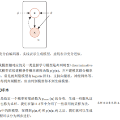This paper presents a novel fingerprinting methodology for the Intellectual Property protection of generative models. Prior solutions for discriminative models usually adopt adversarial examples as the fingerprints, which give anomalous inference behaviors and prediction results. Hence, these methods are not stealthy and can be easily recognized by the adversary. Our approach leverages the invisible backdoor technique to overcome the above limitation. Specifically, we design verification samples, whose model outputs look normal but can trigger a backdoor classifier to make abnormal predictions. We propose a new backdoor embedding approach with Unique-Triplet Loss and fine-grained categorization to enhance the effectiveness of our fingerprints. Extensive evaluations show that this solution can outperform other strategies with higher robustness, uniqueness and stealthiness for various GAN models.
翻译:本文为知识产权保护基因模型提供了一个新型的指纹鉴定方法。 歧视模式的先前解决方案通常采用对抗性范例作为指纹,这给出了异常的推断行为和预测结果。 因此,这些方法不是隐形的,很容易被对手认出。 我们的方法利用隐形的后门技术克服上述限制。 具体地说,我们设计了核查样本,其模型产出看起来正常,但可以触发后门分类器做出异常预测。 我们提出了一个新的后门嵌入方法,与Unique-Triplet Loss和精细分类相结合,以提高我们的指纹的有效性。 广泛的评估表明,这一解决方案可以超越其他战略,使各种GAN模型更加坚固、独特和隐秘。





